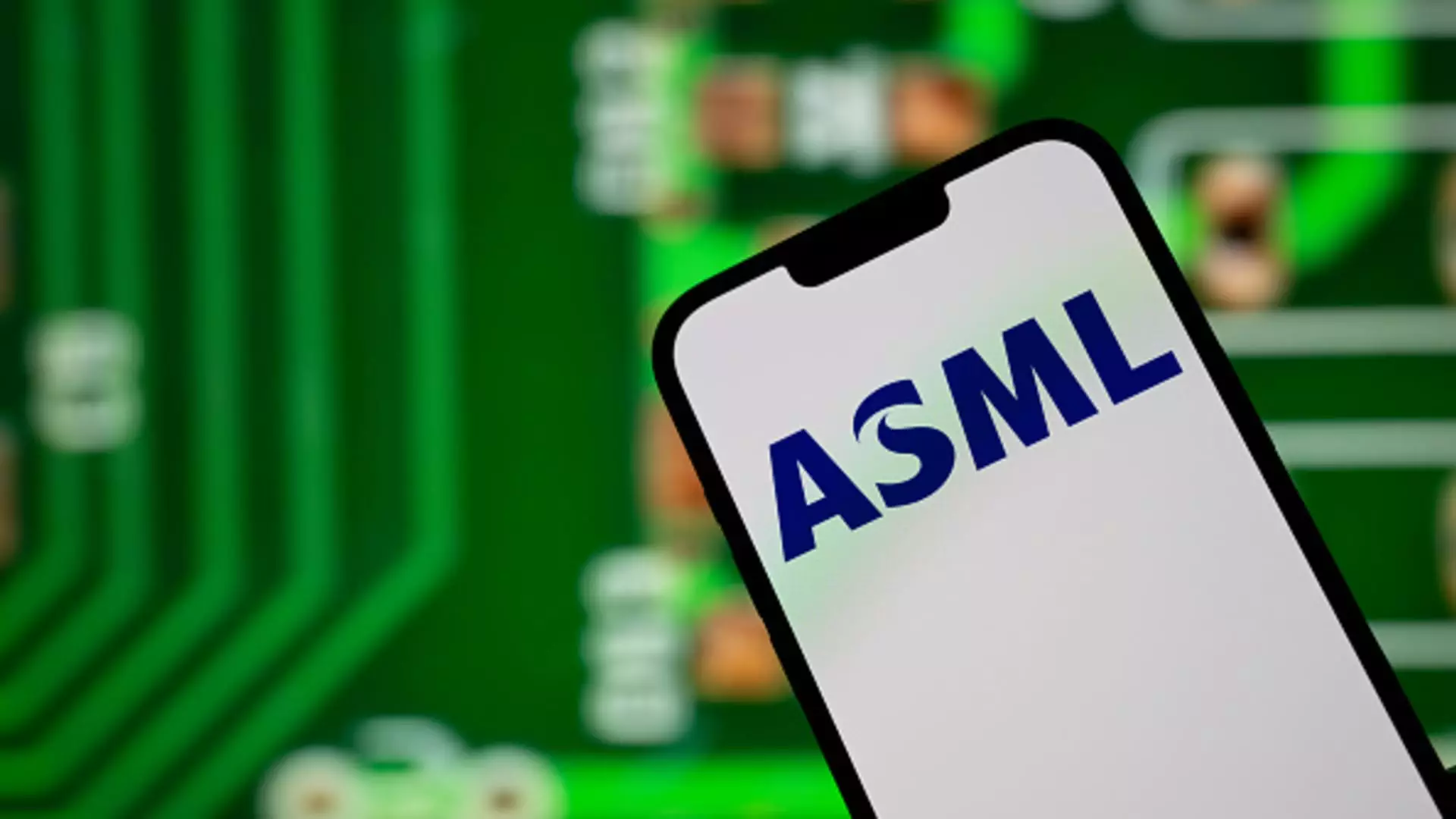The semiconductor industry is often regarded as a bellwether for technological advancements and economic growth, and stalwarts like ASML hold a significant place in this ecosystem. However, with its recent financial disclosures, ASML, a leading Dutch semiconductor equipment manufacturer, has revealed concerning signals that suggest potential turbulence within the market. The net bookings for the first quarter of 2025 fell short of expectations, coming in at €3.94 billion ($4.47 billion) instead of the predicted €4.89 billion. While some metrics, like net sales and net profit, slightly exceeded forecasts, the underwhelming bookings raise questions about future demand.
The Shadow of Artificial Intelligence and Tariff Issues
ASML’s CEO, Christophe Fouquet, emphasized that the burgeoning field of artificial intelligence (AI) continues to underpin demand for their cutting-edge chipmaking technology. Despite this assertion of strength, the underlying message was tinged with caution, as Fouquet alluded to “uncertainties with some customers.” This indicates that while AI could push the envelope of semiconductor usage, external factors—like geopolitical tensions and tariff debates—could stifle growth. The company’s revenues for 2025 are pegged between €30 billion and €35 billion, a range that reflects cautious optimism but also acknowledges prevailing market volatility.
Tariffs represent a significant disruptor in this already complex landscape. With President Biden’s administration navigating the choppy waters of trade policy, the semiconductor supply chain’s stability is in question. The temporary exemptions for smartphones, computers, and semiconductors from reciprocal duties might ease some immediate pressures, but the larger picture remains murky. Fouquet’s warning that current tariff dynamics create “new uncertainty” highlights the precarious balance that ASML, along with its industry counterparts, must maintain.
Market Sentiment and Future Outlook
The fragility of global chip stocks in recent weeks underscores the anxiety prevalent in the semiconductor sector. Investor sentiments are understandably jittery, as they weigh the potential repercussions of tariffs against the backdrop of a market increasingly dependent on advanced technologies. Companies engaged in semiconductor manufacturing and related sectors find themselves at a crossroads, torn between capitalizing on emerging trends and grappling with external factors that could influence their performance.
ASML’s position is particularly pivotal, given its role as a primary supplier of photolithography equipment used in chip production. With major technological shifts and demands that are not slowing, there remains a notable dichotomy. On one hand, there’s undeniable growth fueled by sectors like AI; on the other, the specter of rising tariffs and market uncertainty could derail progress. Analysts and stakeholders alike must now consider whether ASML can navigate these intricate challenges effectively while continuing to drive innovation in a rapidly evolving industry.
While ASML’s recent performance metrics may evoke concern, the company stands at a critical juncture that could shape its future trajectory. With its foundational role in semiconductor production technology, ASML must not only adapt to changing external conditions but also leverage its expertise to remain resilient amidst uncertainties. The navigation of market dynamics will require keen strategic foresight and agility, determining whether the presiding optimism around AI will translate into tangible growth, or if external pressures will curtail the envisioned advancements.

